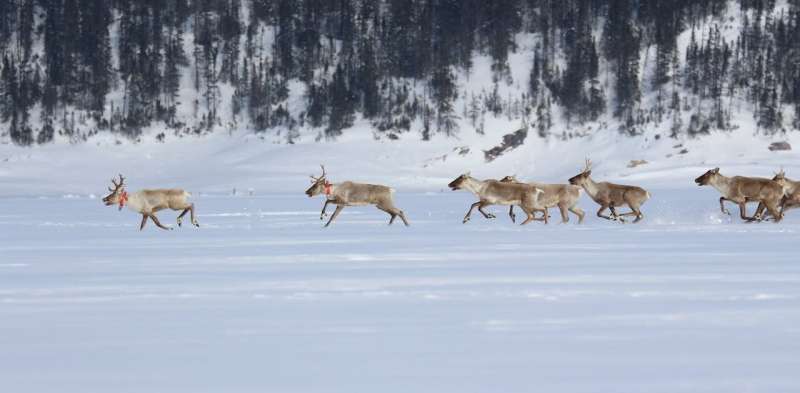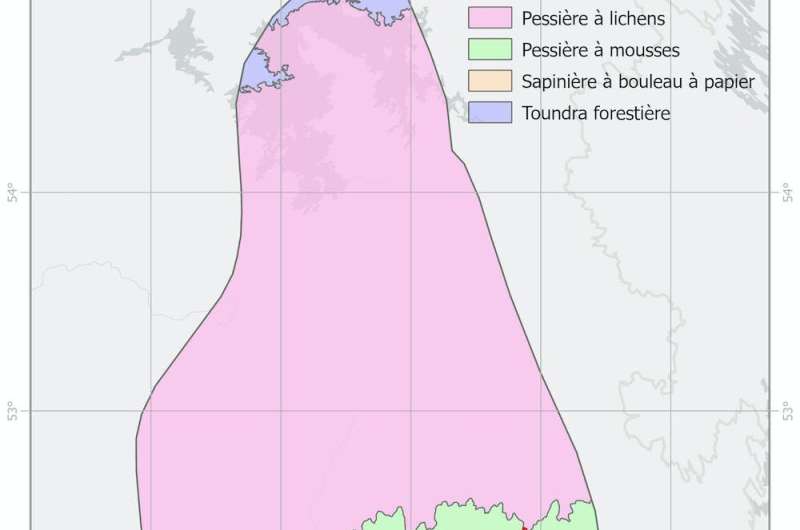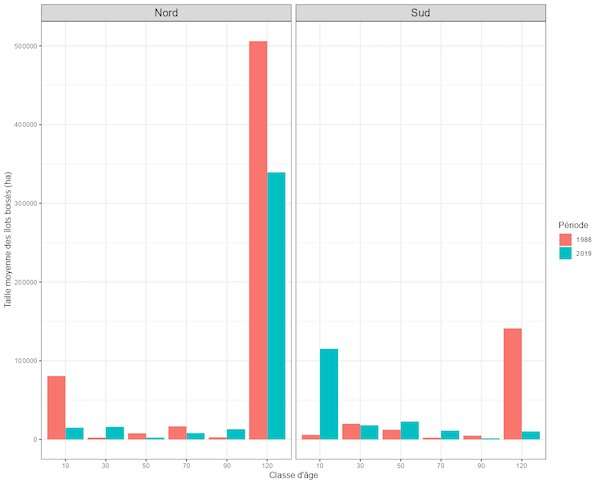This article has been reviewed according to Science X's editorial process and policies. Editors have highlighted the following attributes while ensuring the content's credibility:
fact-checked
trusted source
written by researcher(s)
proofread
A hundred years of logging threatens the Innu link to their land

"Nutshimit," which means "the interior of the land," is Innu poet Joséphine Bacon's favorite word because it is intimately linked to Innu identity. Nutshimit, the place where the Innu soul is deposited, is what created the links with the land that have ensured the survival and cultural and social development of the Innu over the millennia.
Atik, the woodland caribou, is the most important element that has helped foster links between the Innu and the land. Unfortunately, the interior has been undergoing major transformations for several years now.
So much so that in the southern part of the Nitassinan of the Innu of Pessamit, on Québec's North Shore, this age-old link with the land is being erased as logging continues to move inexorably northwards.
As researchers, biologists (including one of Innu origin) and forestry engineers, we are at the interface of scientific and Indigenous knowledge. The forest environment is changing as a result of human activity. We are trying to gain a better understanding of how this is happening in order to guide future actions to preserve all the values that the forest represents, including Innu culture.
The Nitassinan of Pessamit
The Nitassinan of Pessamit is a vast territory within the boreal forest of eastern Québec.
This territory stretches from the shores of the Gulf of St. Lawrence to the edge of the Caniapiscau Reservoir.
There are three bioclimatic zones here (plant associations in balance with the regional climate): the southern one is the Balsam fir-White birch domain; in the center is the black spruce-moss domain; and in the north the spruce-lichen domain.

René-Levasseur Island corresponds approximately to the northern limit of commercial logging. North of this limit, the forests are generally not productive enough to allow forest management. Logging operations are therefore concentrated in the southern portion of Nitassinan, an area approximately 60,000 km2, or twice the size of Belgium.
A changing forest landscape
Forest fires and, to a lesser extent, disturbance by insect pests help to regenerate the forests of Nitassinan. Because of the maritime climate and rugged terrain, fires, although present, are not very frequent in the area. This allows forests to develop over very long periods free of disturbance.
As a result, the pre-colonial landscape of Nitassinan was heavily dominated by old-growth forests. It is estimated that more than 70% of the forested area was dominated by forests more than 100 years old, 50% of which were more than 200 years old. We can imagine a matrix of old-growth forests that formed the backdrop to the forest landscape, with patches of younger forests superimposed as a result of the passage of fire.
Since the forest colonized Québec's North Shore following the retreat of the glaciers, the proportion of old-growth forest has varied over time with climate fluctuation, while remaining the dominant component of the landscape. It is in this type of landscape that Innu culture has flourished.
Old but rich forests
Contrary to what is often said in forestry circles, old-growth forests in the boreal zone are not stands in decline, vulnerable to insects and disease. In fact, the absence of fire over very long periods allows forests to acquire characteristics that are absent from younger forests. For example, old-growth forests typically have a diversity of tree sizes and ages.
With the passage of time, these forests become reservoirs of dead wood and soil carbon. Many of the species found in old-growth forests are associated with these characteristics or require a lot of time without major disturbance to grow and become established.
The forest is getting younger from south to north
Since the early 1970s, Québec has periodically carried out an ecoforest inventory to obtain the knowledge necessary to plan sustainable forest management.
Part of the data is obtained using aerial photographs of the entire forested area of southern Québec. These photographs are interpreted, and the boundaries of forest stands are drawn taking into account a number of variables. These include species composition, tree height, canopy density, forest age and natural and anthropogenic disturbances.
Thus, for the southern portion of Nitassinan, we documented the progression of logging and forest fires in order to assess their impact on the state of the forest, which has mainly been the disappearance of old-growth forests.
Although logging does not lead to deforestation, its impact on forest landscapes results from the rate of harvesting and the spatial extent of interventions, which exceed natural disturbances.
Ecosystem-based management, in which the impact of harvesting on the forest would be within the limits of the variability imposed by natural disturbances, would guarantee the maintenance of biodiversity and Indigenous cultural practices.

Rate of cutting accelerating
Unlike forest fires, cutting exclusively targets mature forest stands, including old growth forests.
By comparing forest inventory data from the late 1980s with similar data from the current period (2019), we can see the decline of old growth forests south of the 50th parallel north. Since the start of logging predated the 1980s, the proportion of old forests there was already reduced in comparison to north of the 50th parallel (21% of old growth forests remain south of the 50th parallel north, compared to 57% in the north).
Although logging is more recent in the north, large tracts of old growth forests more than 1,000 km2 now occupy barely 20% of the landscape, whereas they represented double of that 30 years ago. These large tracts are essential for the maintenance of vulnerable species, such as the woodland caribou.
Devastating consequences
The northward expansion of forestry operations and the accelerated rate of logging, in addition to natural disturbances and the fragmentation of old-growth forests, are having a direct impact on the biodiversity and cultural practices of the Innu.
For example, the steady increase in moose and its main predator, the wolf, since the 1990s is a direct consequence of forestry operations and forest rejuvenation. The arrival of moose and wolves in the habitat of woodland caribou has had devastating consequences for the latter. Predation pressure and habitat loss have contributed significantly to the decline of caribou in southern Nitassinan.
This has also had a major impact on traditional Innu culture, given their age-old link with the woodland caribou. For over fifteen years now, the Innu of Pessamit have stopped hunting caribou in the hope of contributing to its recovery. They are also investing in land protection with the aim of protecting the Pipmuacan herd.
Despite the major transformations that Nitassinan has undergone in recent decades, there is still time to preserve and restore the land, its biodiversity, the woodland caribou and Innu culture, while maintaining a truly sustainable economic activity.
That's the challenge facing the Innu people, who have lived on the land for millennia.
Provided by The Conversation
This article is republished from The Conversation under a Creative Commons license. Read the original article.![]()


















